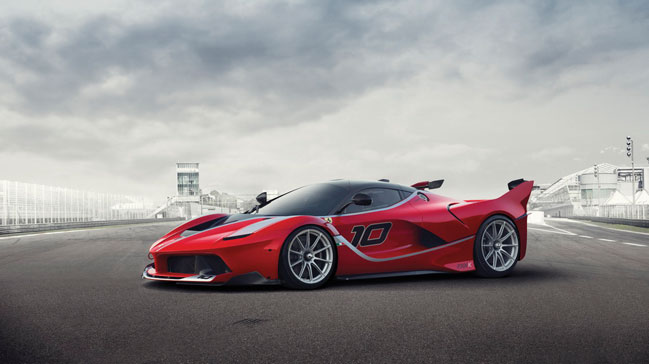
In 2005, Ferrari used the Bologna Motor Show to debut the FXX, a limited-edition vehicle that would add considerable exclusivity and mystique to the brand.
Only 29 FXXs were produced and ownership was decided by a committee that evaluated applications from those with a proven devotion to the marque and €1.5m (£1.1m) to spend on a vehicle that couldn’t be driven on the road and wouldn’t compete in any race series.
Instead, the select batch of inaugural FXX owners — aka client test drivers — signed up to a programme where they would be able to take part in track events at prestigious circuits around the world with a support package that included technical teams and personalised driver development.
Ferrari has a tradition of building limited-edition sports cars and it was envisaged that the FXX research and development programme would provide the framework on which specific future vehicles would be developed.
The FXX programme did not concern itself with homologation (i.e. the normal rules of the road) and its first vehicle brought with it Formula One (F1) gearbox technology that allowed drivers to change gear in less than 100msec, an aerodynamic design that provided a 40 per cent increase in down force compared with the Enzo, and a 6,262cm3 V12 engine capable of delivering 800hp at 8,500rpm.
Driver feedback, telemetry and data gathered during 16,500km of tests carried out in 2006 and 18,500km in 2007 fed into a so-called evolution package that saw a modified engine deliver 860hp at 9,500rpm, gearshifts of 60msec and a 25 per cent increase in aerodynamic performance.
The evolution kit saw the FXX programme extended for a further two years to 2009, with the entirely new 599-XX debuting in 2010 and the FXX-K in December 2014.
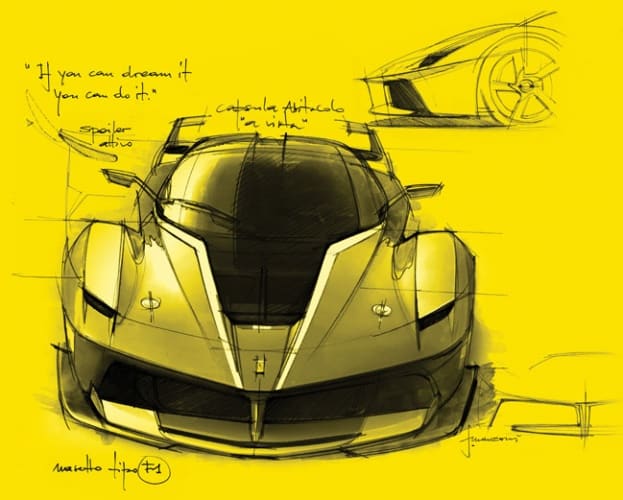
The FXX-K is a hybrid based on the LaFerrari (a hybrid road car unveiled by Ferrari in 2013) that employs a KERS system with total maximum power of 1,050cv, total maximum torque greater than 900Nm, maximum revs of 9,250rpm, and 140kW (190cv) in electric motor output. According Flavio Manzoni, Ferrari’s head of design, the FXX-K marks the ideal confluence between style, engineering and aerodynamics and, in the purest tradition of the Maranello marque, betters any GT that preceded it.
‘LaFerrari offered an ideal basis to push limits even further, the result of close collaboration between the GT division and Gestione Sportiva, Ferrari’s racing arm,’ he told The Engineer.
‘The FXX-K expresses the full potential of the design, thanks specifically to the development work carried out with the aerodynamicists. Its forms express
an irresistible force, visually conveying the car’s outstanding power and underlying the promise of unbridled driving excitement.’
Hypercars are not designed with subtlety in mind and Ferrari’s latest design announces itself long before it is seen, thanks largely to the removal of silencers from the exhaust. Such vehicles will also outrun their predecessor, as witnessed at Ferrari’s private Fiorano racetrack where the FXX-K completed a lap five seconds faster than the LaFerrari.
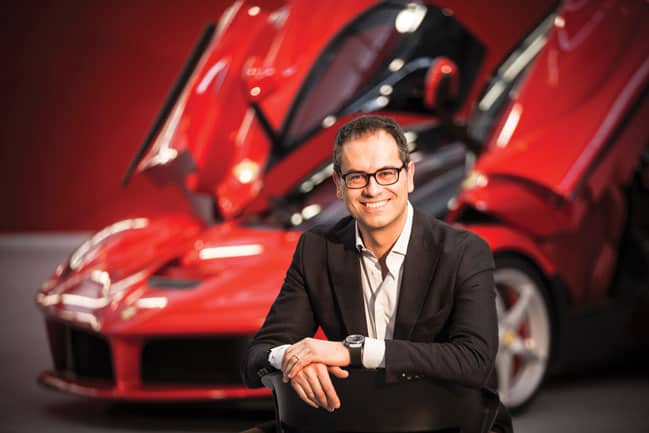
’The FXX-K’s forms express an irresistible force, visually conveying the car’s outstanding power and underlying the promise of unbridled driving excitement.Flavio Manzoni, Chief designer, Ferrari
Hypercars are built for speed and seemingly possess very little finesse, but Manzoni stressed that the latest XX moves away from kit format to a complete redesign that keeps faith with the stylistic principles of the car’s base.
‘This is the pinnacle of Ferrari production and the most extreme Ferrari,’ he said. ‘It was necessary to have a very original design, not obvious, not too… inspired by the past, and this was a key problem: how to get a very original shape and at the same time how to be absolutely recognisable as a Ferrari, even without the prancing horse.’
This was achieved in part by maintaining continuity with the designers, aerodynamicists and engineers that had worked on the LaFerrari, thereby creating the strong synergy needed to take the FXX-K forward in the way Manzoni envisaged.
‘In Italian we say assimilari; it means to deeply understand each single need of every part of the car,’ said Manzoni. ‘If you understand it then you can form a shape that is absolutely consistent with that.’
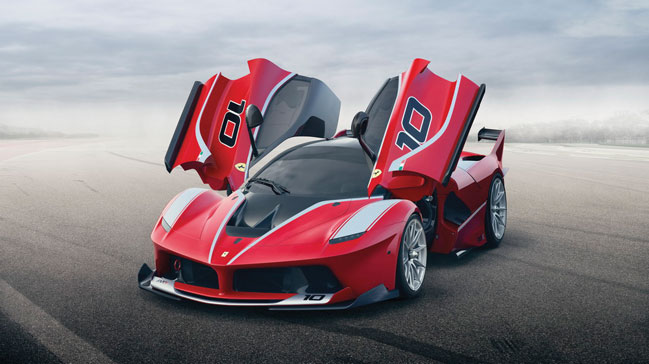
’If you understand each need of each part of the car, you can form a shape that is absolutely consistent with that
Carrying the group synergy forward, the Ferrari team developed an aerodynamic shape with a 50 per cent improvement in down force in the low-drag configuration and 30 per cent improvement in the down-force configuration.
Manzoni explained: ‘The most obvious aerodynamic features are the flap profiles at the front and the rear winglets perched high on jet fighter-like tail deflectors. The latter are…integrated into the design of the rear wings as opposed to being simply tacked on, and contribute both to longitudinal stability as well as to channelling the air efficiently to maximise the efficiency of the rear spoiler. The front headlights have been removed to save weight, replaced by high-efficiency LEDs… inserted in small recesses. Their horizontal disposition underlines the concept of a light bonnet spanning the dynamic side-pods housing the wheels. Likewise, the round tail lights have given way to an outlet duct — extracting air from the wheel arches — which integrates LEDs in their perimeter, forming a distinctive C shape not unlike early design proposals for the LaFerrari itself. The rear view is clearly without compromise: each element of its design is borne out of a functional approach, starting with the prominent lower diffuser, which projects forcefully out [the] rear.’
Would, however, such high-end modifications be acceptable to the buyers of regular road cars? And are the hybrid drivetrain technologies taken from F1 ever likely to make it into the design inventory of the volume automotive OEM?
Mike Dickison, director of niche vehicle programmes at Coventry University has worked on a project with Jaguar Land Rover, plus consultancies and OEMs, to consider what had to be done to make existing vehicles more aerodynamically efficient.
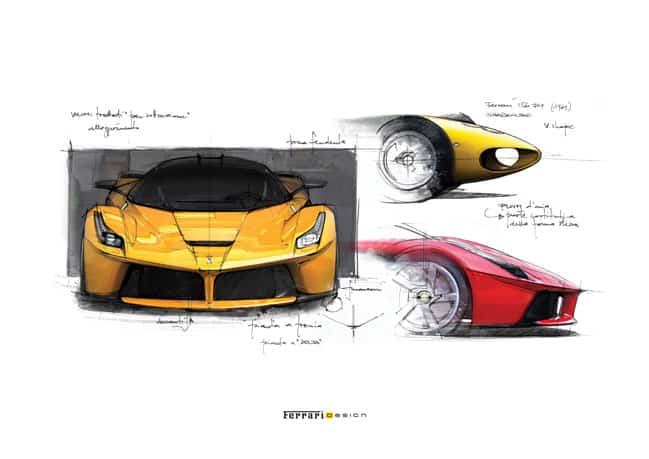
‘We were able to do that and the result that we came up with did look a bit strange, especially at the back of the vehicles,’ he said. ‘What a mainstream company wouldn’t do is immediately just put on the ultimate in terms of aerodynamic kit because the customers just wouldn’t be able to take it on board quick enough. The good thing about these extreme cars is that they set the scene; they say “this is the art of the possible” and the challenge is for mainstream OEMs to turn it onto something they can actually sell in a car
that people will buy [because it] won’t be hugely expensive.
‘On that basis, we have a team of our researchers working with GKN on their gyro drive system that basically came from F1 technology. We’re working on it terms of the manufacturing process, in terms of the materials, in terms of looking at the durability so that we can get something that we know works — but is extremely expensive — to something that not only works but is also cost effective to produce.’
Dickison added that a significant amount of work needs to be done before technologies employed on the XX make their way into the sorts of vehicles that appear regularly on the Society of Motor Manufacturers & Traders’ monthly new registration lists, but that isn’t to say that the programme lacks virtue.
He said: ‘They [Ferrari] have been quite honest about it in so far that it isn’t just a styling exercise to make it extreme. I think its radical in as far as it does actually work and I think this is the difference between where we are now and where we were maybe 10–15 years ago, where extreme things were being done in terms of styling and shapes but there wasn’t particularly wonderful understanding of how it works. Now, the computing power has moved on so much that these shapes and concepts can be pretty well evaluated.’




April 1886: the Brunkebergs tunnel
First ever example of a ground source heat pump?